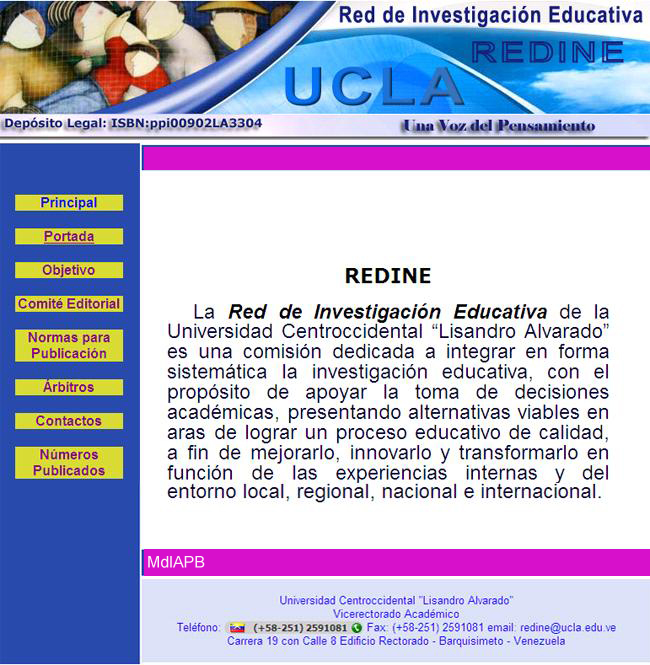artkidz project based on multiple intelligences for the development of the linguistic-creative potential in children from 4 to 12 years old in the Barquisimeto Museum.
Keywords:
project Artkidz, multiple intelligences, development, art, englishAbstract
The following investigation has as a main purpose to show the Artkidz project, which is based on the Theory of Multiple Intelligences. This investigation pretends to develop the linguistic and creative potential in kids from 4 to 12 ages who belong to the Artkidz program, taking place in the Museum of Barquisimeto. This one is a camp investigation, corresponding to a special project, which starts from a diagnostic study of educative needs in a group of children from the Centro-Occidental region. Besides, this project will be used as a basis to support the design of a didactic program that will allow us develop the Multiple Intelligences in kids from Lara State. For this reason, a didactic activities control will be established, also will be planned the possible evaluations, both qualitative and quantitative. This will allow us have the control of each student’s performance during the execution of the project.
Downloads
References
Barone, E y Mandorla, J. (1994). ABC de la hipnosis. Tikal ediciones. Gerona. España Constitución Bolivariana de Venezuela (1998). Capítulo VI, Artículos 98 y 103.
Cruz, C. (2005). Los genios no nacen…!se hacen! Editorial Taller del éxito. 3ra edición.
De Beauport, E. y Díaz, A (2004). Las tres caras de la mente. Sexta Edición. Editorial Galac. Caracas, Venezuela.
Falieres, N y Antolin, M. (2003). Cómo mejorar el Aprendizaje en el aula y poder evaluarlo. Círculo Latino. Austral S.A. Buenos Aires, Argentina.
Gardner, Howard (1993). Frames of Mind: The theory of multiple intelligences, New York: Basic Books. Second edition, Fontana Press. Britain. 466 + XXIX pags.
Larsen-Freeman, D. (2000). Techniques and principles in language teaching. Oxford, University Press. 2da Edición. New York, U.S.A
Ley Orgánica de Educación (1980). Primer título, Disposiciones generales; capítulo III, artículo 21.
Lorayne H. (1972). Cómo adquirir una super memoria. Editorial Burquesa S.A, 7ma Edición. Barcelona, España.
Sperry, R. (1981). [Documento en línea].
Disponible en: http://calteches.library.caltech.edu/
527/2/Sperry.pdf.
[Consulta: 2010].
MacLean, P (1990). The Triune brain in evolution: role in paleocerebral functions. First Printing. Plenum Press. New York, United states of America.
Murphy, J. (1975). El poder de la mente subconsciente. Editorial Climent. New Jersey, U.S.A.
Smith, M. (2002). Howard Gardner and multiple intelligences. The encyclopedia of informal education [Documento en línea]. Disponible en: http://www.infed.org/thinkers/gardner.htm. [Consulta: 2010].
Published
How to Cite
Issue
Section
Derechos del/de autor/es a partir del año de publicación
Esta obra está bajo la licencia:
Creative Commons Reconocimiento-NoComercial-CompartirIgual 4.0 Internacional (CC BY-NC-SA 4.0)
Las opiniones expresadas por los autores no necesariamente reflejan la postura del editor de la publicación ni de la UCLA. Se autoriza la reproducción total o parcial de los textos aquí publicados, siempre y cuando se cite la fuente completa y la dirección electrónica de esta revista. Los autores(as) tienen el derecho de utilizar sus artículos para cualquier propósito siempre y cuando se realice sin fines de lucro. Los autores(as) pueden publicar en internet o cualquier otro medio la versión final aprobada de su trabajo, luego que esta ha sido publicada en esta revista.




